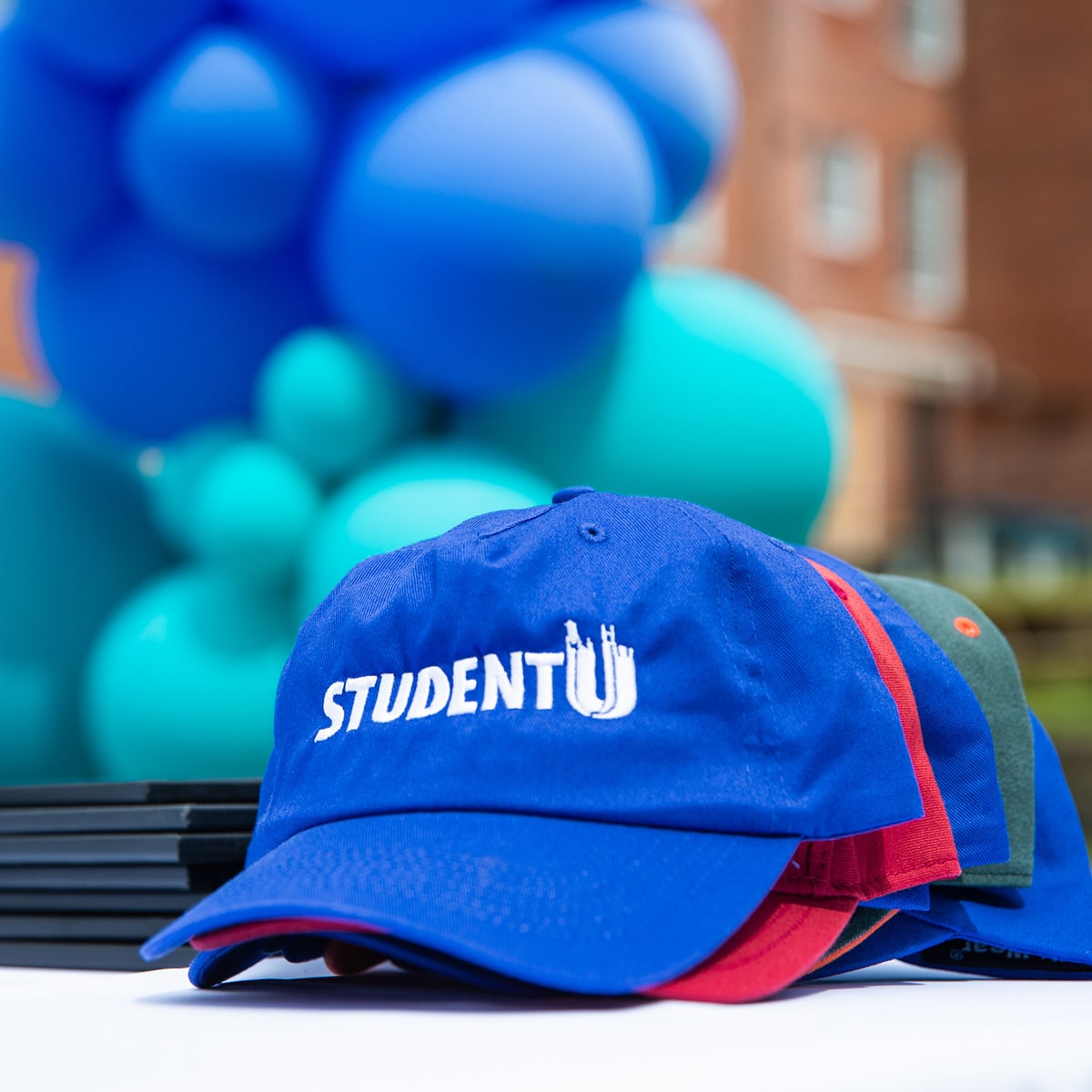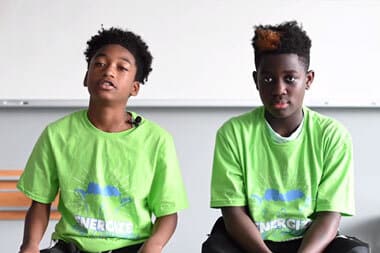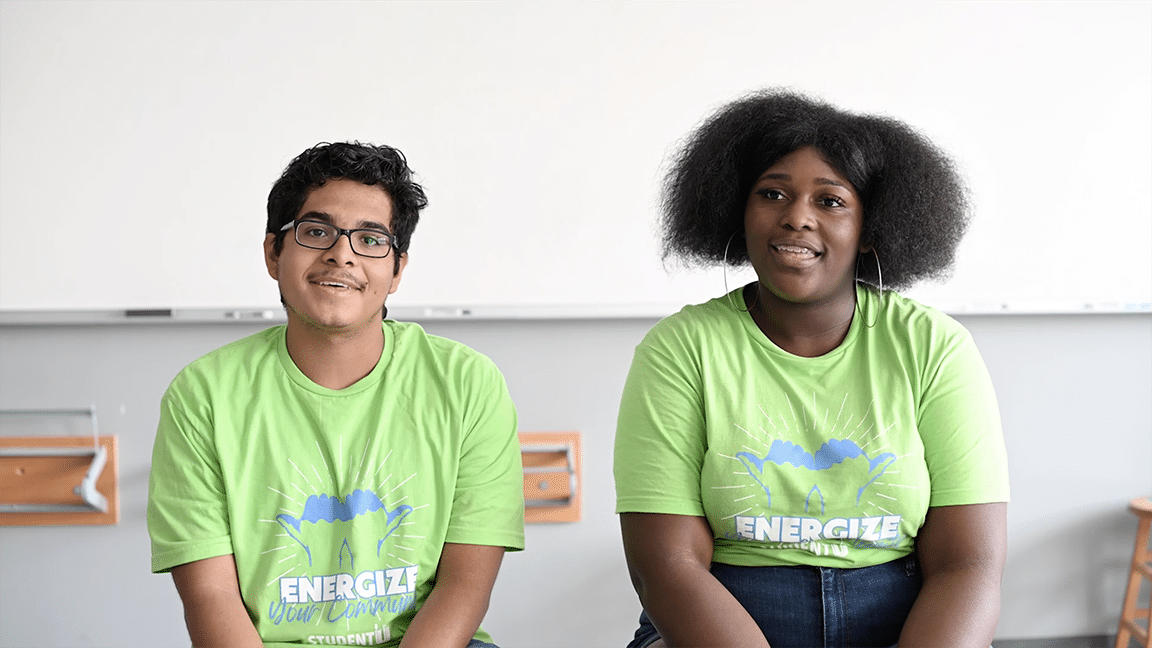 Youth Work 101: On COVID-19, Family Time, and Culture Building Circles
Youth Work 101: On COVID-19, Family Time, and Culture Building CirclesBy: Bria Davenport, Connor Kirkpatrick
Welcome to the Youth Work 101 Series! Student U started this blog series to support youth work practitioners, educators, advocates for young people, and after-school professionals in their work by sharing what has worked for us and by offering free resources each month on a best practice. Click here his month’s resource for youth workers.
This month’s blog on Culture Building Circles is paraphrased from an interview with Bria Davenport, Student U’s Middle School Coordinator Assistant, with writing by Connor Kirkpatrick, Student U’s Development Associate.
Hi there! My name is Bria, and in addition to being around our Middle Schoolers every day and being a proud planner addict, I get to plan a lot of our fun programming at Student U. With some teachers having died from COVID-19 complications in our nation, this is an especially concerning time for youth workers. Working with young people means you can be exposed to lots of bacteria and viruses. Educators and youth workers often have resilient immune systems because they are exposed to every snotty Kleenex that finds its way into a trash can. I have a friend who is a preschool teacher in New Orleans, and I saw her post on Instagram recently, sharing a video about alternate greetings to the germ-spreading handshake that people are using to prevent the spread of COVID-19, with a comment that she now greets her students with a “Namaste” bow with great success. Her students are really into it now. While Durham Public Schools is currently in “Plan C” or remote-only instruction, and Student U is conducting most of our programming virtually, we are continuing to monitor the latest reports from the CDC to best protect our students and families and will be communicating with our families accordingly. But in case you’re an educator who happens to be teaching in-person and haven’t heard, the best way to protect yourself is by washing your hands, wearing a mask, and staying 6 feet away from everyone as much as possible.
This month, I’m covering our best practices for Family Time and culture-building circles. At Student U, once a week for 45 minutes on Mondays during the school year and every day for 20 to 30 minutes during the summer, we offer a space called Family Time to our students. Essentially, Family Time is a homeroom-like setting where a group of students and teachers do community-building activities that build personal development. At Student U, I get to plan what topics we cover during this space, and some of the lessons we have covered have included financial literacy, Black History Month, Hispanic Heritage Month, Women’s History Month, goal setting, and showing gratitude. These spaces are essential and allow students and teachers to get to know each other and build positive relationships and share their values in a safe space. We implement Family Time because this time helps children trust you more as a mentor, especially when you are open and honest with them. Having a space where you’re watching videos together, talking about financial planning, and sharing your dreams with each other brings your relationship with students into real life, and they can begin to see you as a person rather than just someone who teaches content. This space is also important to cultivate if you are teaching online!
In Middle School, my homeroom experience was very cold and didn’t feel like a great space to be in. At Student U, we structure this time to build warmth and engagement with students. Each Family Time consists of a culture-building circle, which is a strategy to create a safe space for students to be vulnerable with each other. After doing a short activity, you can gather students in a circle and use a talking piece. For a circle to be successful, you have to set some group norms. At Student U, we have three group norms that are carried in every space. They are:
-
- Speak Your Truth – This reminds students to not speak on anyone else’s behalf but from their own experiences and perspectives.
- Listen From Your Heart – This norm helps students practice empathy by being willing to listen to what others have to share in the circle.
- Respect the Talking Piece – A talking piece is a small token, like a stuffed animal, that you pass around the circle. This helps regulate conversation and stop students from talking over each other, as well as provides something a student can rub in their hands as they collect their thoughts. NOTE: Do not use a ball or something that can be thrown! This can become a distraction rather than a useful tool.
Besides these norms, students can add in their own expectations based on the group dynamic and what your students need. We set those norms to make sure everyone has an equal playing field when talking to each other and so that students feel safe to share their thoughts and opinions.
After introducing the norms, we will often structure our circles with an icebreaker to help get students’ thoughts going or use that as an opportunity to move students around in the circle if you know two students should not sit together. After an icebreaker, you can then ask a series of previously prepared questions about the topic you are covering. Finally, you can close the circle with an affirmation or a check-out, such as going around the circle and sharing one word about how you are feeling.
For our Middle School Students, we keep our circles to about 10 to 15 minutes in length. We find that this length helps the circle not veer off and keeps students’ attention. For High School students or older, you might be able to extend the time to 20 to 30 minutes.
And that’s how you facilitate a culture-building circle! Just be sure to plan your questions and structure in advance.
Resource:This month we are offering a sample Family Time plan, which includes some guiding questions for a culture-building circle within it for an “Identity Wheel” activity. This circle is designed to get students discussing what the most salient parts of their identities are, and to talk about why respecting different identities is important. Click here to go to this resource.
Further Reading
- Oakland Schools created a great video showing the power of community building circles and why they find them effective.
- The College Board developed guides for “Advisory Sessions” with the Educators for Social Responsibility. Each guide includes 36 advisory session plans that put students on the path to success in life.
- Armadale Public School developed culture building circle plans for the first 10 days of school for use during “Family Time” like environments.
Until next month!
—
Donate to Student U and keep posts like this one coming.
Subscribe to this blog by entering your email to download the resource above.









